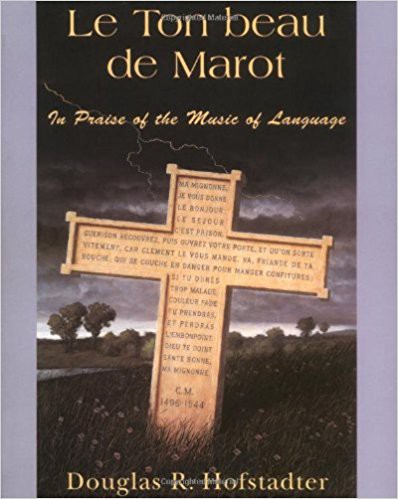essays
Is It Possible for Machines to Translate Poetry, When Humans Can Barely Do It?
Converting poems from one language to another is challenging even for expert linguists—maybe computers can do a better job

Electric Lit is just $4,000 away from our year-end fundraising goal of $35,000! We need to hit this target to get us through the rest of 2025, and balance the budget for 2026. Please give today! DONATE NOW.
In 1537 the French writer Clement Marot wrote a short, light-hearted poem called “Ma Mignonne” about a young lady fallen ill and a provocation for her to get better quick. The poem is skinny but dense, a set of 14 rhyming couplets where each line is only three syllables long: “Ma mignonne / Je te donne / Le bon jour” and so on. It takes a lighthearted approach to the affliction: in short, illness is a prison from which to escape, so the young lady should eat preserves so she won’t lose her figure. Perhaps Marot wrote it as a social gesture to her father, or a subtle and provocative invitation to the girl herself; it is no great work of serious literature. But centuries later the cognitive scientist Douglas R. Hofstadter wrote a 500+ page tome about “Ma Mignonne” called Le Ton Beau de Marot. (Don’t worry, it’s in English.) Or rather, Hofstadter wrote a book about his attempts to translate the poem into English, about the hundreds of English translations he collected from friends, about the strangled strangeness of moving words between languages.
It is a book that truly warrants the word obsessive.
At the heart of Le Ton Beau de Marot is a struggle to understand what translation really does. What does a literal translation of a poem even mean? Hofstadter begins his book with two of his own translations of “Ma Mignonne,” the ones that started his multi-year quest of perfectly translating it. At the time, he thought of the translation as a simple challenge he didn’t quite have the knack for. As his compulsion to better translate this poem grows, he collects more and more translations from friends and colleagues, intrigued by each new rendition and what it prioritizes.
Some translations focus on preserving the rhyme scheme, rhythm, or sentence structure of the original, but change the humor, diction, or details; others retain the specifics, but are willing to change the sound. An early version by Hofstadter reads: “My sweet dear, / I send cheer — / All the best!” As he begins to ship out the poem as a translating challenge, we discover many other interpretations. The one beginning “Chickadee / I decree / A fine day” is written by Hofstadter’s wife, Carol.
Hofstadter discusses cultural translation, the idea of not just translating the words but also the ideas, the locations. Is it all right to transform fruit preserves into breakfast meat if that better represents the idea to a modern, North American reader? The original poem includes a self-reference to Clement — should that now, if Hofstadter is translating, be Douglas? Does an “accurate” translation require the same details, or the same effect? What is it acceptable to change when transporting a work across languages, time periods, and cultures? When does a poem become a different poem?
What is it acceptable to change when transporting a work across languages, time periods, and cultures? When does a poem become a different poem?
I have been told that it is impossible to translate poetry. In a poetry workshop I heard a long, impassioned lecture about the fact that “raven” sounds kind of like “never” backwards and thus Edgar Allan Poe’s famous poem can never slip out of its English prison. Given the intricacies and difficulties of poetry I read in English, I cannot imagine the subtleties missed when I read translated poetry. The entwinement between sound and word and sense cannot be truly replicated in a different language. As Hofstadter demonstrates with over 60 renditions of “Ma Mignonne,” there is no perfect solution. In attempting to solve the puzzle of translation, he merely creates a kaleidoscope of options that, to be honest, become exhausting to read.
The draw of this book is not the poetry, which at best amounts to a short and whimsical thing, but rather the engineering approach to the poetry, the puzzle of it all. Each translation sketches a different possible solution, as if a perfect translation were available would we just articulate what exactly we wanted out of the endeavor. Hofstadter, after all, is not a translator but a scientist, buried neck deep in his own ideas about artificial intelligence. He takes the simple “Ma Mignonne” and asks: what’s really happening when we read it? How do we make sure that happens in English?
Being an artificial intelligence researcher, Hofstadter gave his translation challenge to computers as well. He was disappointed in the results, but intrigued by what machine translation missed. Like so much technology, the advent of machine translation in the U.S. has its origins in defense: a desire to keep up to date on Russian science during the Cold War. And like Hofstadter’s approach to “Ma Mignonne,” this endeavor was indeed seen as a puzzle. Warren Weaver, one of the founders of machine translation, suggested in 1955 that we frame translation as a cryptography problem: “When I look at an article in Russian, I say: ‘This is really written in English, but it has been coded in some strange symbols. I will now proceed to decode.’”
But machine translation struggled in its early days. In 1960 the Israeli philosopher and linguist Yehoshua Bar-Hillel argued that “fully automatic high quality translation” was an impossible dream. He liked to talk about these two sentences: “the pen is in the box” and “the box is in the pen.” How does a machine know that “pen” refers to two very different objects? He argued that this requires such a wealth of world knowledge that computers would basically have to become sentient. Which, for all the fear of an AI takeover, they are not. Not even in 2018. Not even close.
Yet a quick perusal of Google Translate suggests that our best translation machines can correctly translate Bar-Hillel’s problematic sentences in Spanish. (But only when properly punctuated with a period at the end of the sentence! The machine is finicky.) In German and French it fails, and it may do so in other languages, but Spanish demonstrates the machine’s potential. Something has cracked open without requiring a sentient computer.
Current systems, from Facebook to Google to Baidu, use machine learning, a catch-all name for many different algorithms. Translation uses an algorithm with millions of parameters that, when those parameters are set just right, does an amazing job at taking in one sequence of numbers and outputting another, very specific sequence. For machine translation, the input numbers represent words in the original language, and the output ones are the secondary language. Machine learning requires huge amounts of “training data,” troves and troves of human-translated text that are used to teach the algorithm how the conversion works. Machine learning is not a one-to-one symbol mapping system or even a sequence of logical statements to connect two languages. The engineers working on these algorithms don’t necessarily need to know anything about the languages at hand. In fact, it may help if they don’t. The famous quote among engineers is from Fred Jelinek, a Czech-American researcher originally working on speech-to-text: “Every time I fire a linguist, the performance of the speech recognizer goes up.”
Machine learning is not a one-to-one symbol mapping system or even a sequence of logical statements to connect two languages.
Hofstadter would prefer a more nuanced approach. In a recent article in the Atlantic, he digs into the failings of Google Translate by analyzing its translation of French, German, and Chinese texts into English. The main problem, he states, is its lack of understanding. He laments that “Google Translate isn’t familiar with situations.” Our best results are not intellectual, as Hofstadter would prefer, but statistical: given everything the machine has seen in the past, what is the most likely translation of a new sentence?
One of the consequences of such an approach is that the results can be hard to interpret. Google’s current system was delayed in its release partially due to a problem that the developers nicknamed “hallucinating”: sometimes the algorithm outputs a sentence in which one or two words are translated randomly. Perhaps the algorithm has no high-probability output and so just guesses. It is hard to unravel why a machine learning algorithm does what it does. All we know is that generally it does pretty well.
It is hard to unravel why a machine learning algorithm does what it does. All we know is that generally it does pretty well.
For all its recent success, in some ways the goals of machine translation are modest. Most commercial machine translation is for weather reports, or instructions, or to aid human translators. Even Weaver didn’t claim that machine translation would ever achieve elegance or style. In a 2015 New York Times profile of statistical machine translation, a researcher tells the reporter, “We’re great if you’re Estonian and your toaster is broken.”
But as a poet, it’s impossible for me to ignore the style of machine translated language, even if style was never its goal. Everything has style, regardless of the intent. The funny trick of taking a sentence, translating it into another language and then back again, over and over, and watching the sentence mutate like a whispered secret between gossiping children, is mesmerizing. Is it funny because the machine is getting it so wrong? Or is it funny because it highlights how language is slippery in its meaning? To say a machine is getting it “wrong” is to suggest that there is a “right,” that there is a puzzle here with an answer. There is not. But as an engineer I want to argue that surely some translations are unlikely or misleading; there may be many correct answers but are there not also many incorrect answers? “The box is in the pen.” Here the pen is not a writing implement but a small, fenced-in area. This can be translated incorrectly.
To say a machine is getting it “wrong” is to suggest that there is a “right,” that there is a puzzle here with an answer. There is not.
Perhaps. But to read “the box is in the pen” with an eye on a ballpoint pen, holding within its slender body the potential to draw a box on a blank page, is simply to reinterpret the sentence in unusual way. Unexpected, but not wrong. Perhaps the times the machine may be marked as wrong are the times we see the machine’s strangled view of the world, the strange interpretation of an algorithm suggesting a new perspective. Is this not part of poetry? Turning words onto themselves to find new meaning?
The style of a machine-translated sentence is strange and surprisingly moving, as if the machine were asking that I imbue it with a soul.
This is what I love about poetry, English poetry but also translated poetry: the way it becomes a brief window into the mind of another, the words themselves not strictly meaningful, always odd, sometimes straightforward in their meaning and other times leaving me completely lost. I can know so little about the choices of the poet, yet the words enthrall me as an unexpected sequence of sound and sense. When a poem eludes me, I want to find the connections already living in the poet’s mind even if that truth is not truly available. Similarly, in machine translation it feels incredibly natural to interpret the choices the machine made, to make its words make sense, even though “sense” may not be the right word when considering a computer. And so the style of a machine-translated sentence is strange and surprisingly moving, as if the machine were asking that I imbue it with a soul.
None of the translations of “Ma Mignonne” in Hofstadter’s book were entirely satisfactory; no translation perfectly teleports the work into another language with all its rhythms, nuances, and connotations intact. Instead, each translation poses its own questions about the original. The results of machine translation ask these questions too. Machine translation highlights a collaboration between the human mind and the machine, which we live alongside but are yet to really understand.









